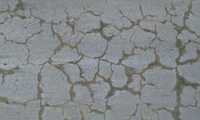Alkali-silica Reaction Resistant Concrete
It is becoming increasingly difficult for concrete producers to secure high-quality aggregates. Thus the Alkali silica reactivity issue, which arises more frequently with lower quality aggregates, has become a primary challenge that affects concrete durability, particularly in infrastructure projects such as dams, roadways, airport runways, highways, and bridges that require large quantities of aggregates.
The reaction between the silica in the aggregates and the alkalis of the cement matrix results in an increase in concrete volume that can cause concrete cracking and spalling, particularly in a high alkali environment that is moist. Clinker contributes most to the alkalinity of the concrete mix and therefore the use of blended cement reduces such alkalinity. The partial replacement of clinker with pozzolanic additives such as Ground Granulated Blast Furnace Slag (GGBFS), fly-ash, and silica fume, contributes to lowering alkali-silica reactivity particularly if added in the cement mill rather than concrete mix. A low water-cement ratio, achieved by incorporating high range water reducers, allows a reduction in the cement content without affecting strength, and thus yields a less alkaline environment and denser structure that slow the diffusion of the alkaline solution. If the mix requires set accelerating admixtures, it is recommended they be free from alkalis. Although the incorporation of special alkali-silica reactivity admixtures has proven to slow down such reaction, the choice of aggregates remains of critical importance, as crushed sand with sharp edges is more reactive than aggregates with round edges and dense structures.
Holderchem has accumulated the knowledge and expertise to design concrete mixes with reduced alkali-silica reactivity. It supplies concrete producers with pozzolanic additives such as Ground Granulated Blast Furnace Slag (GGBFS), fly-ash, and silica fume. It also has within its BATIMIX range of products high range water reducers and viscosity modifiers to achieve substantial reductions in water-cement ratios and a lkali-free accelerators. It also supplies a special admixture to control alkali-silica reactivity in concrete and admixture to enhance concrete impermeability to minimize moisture penetration.



